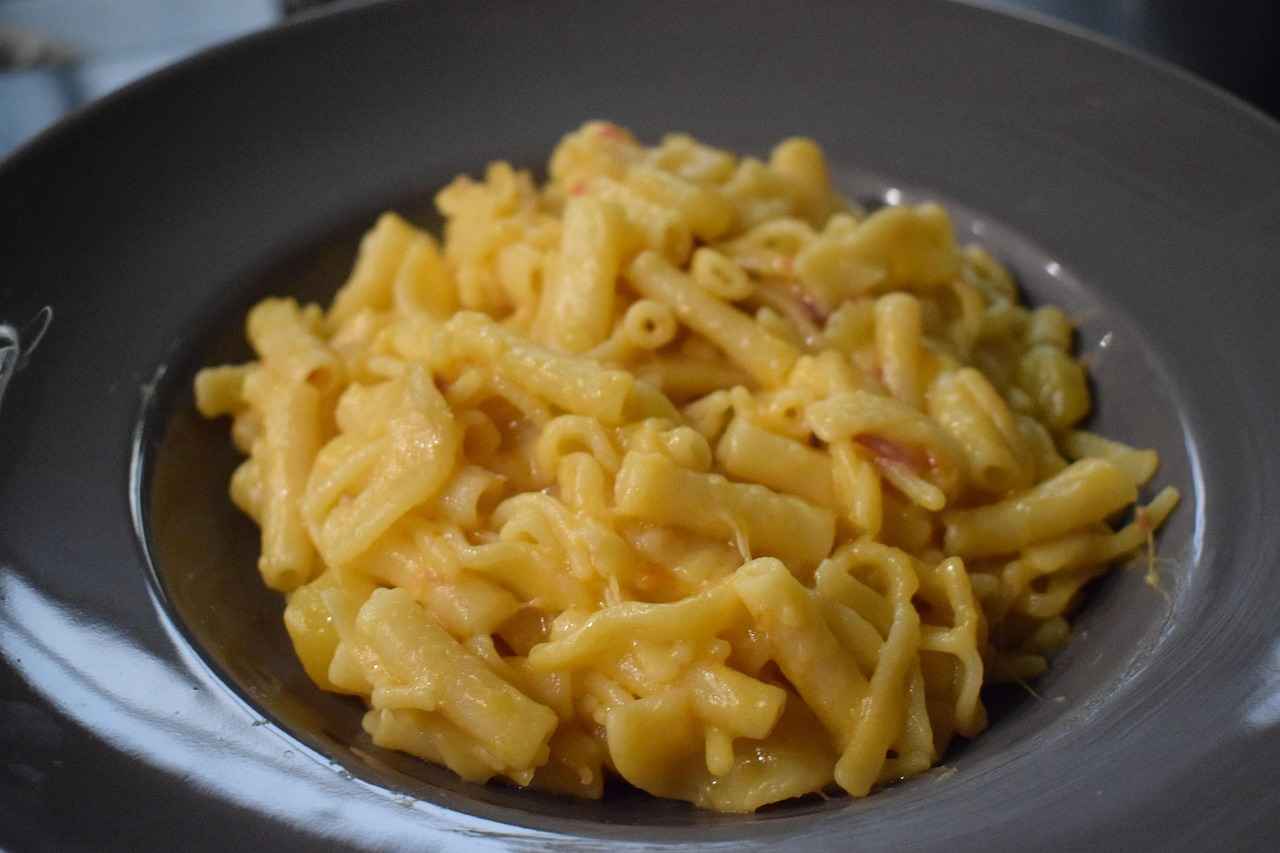This article delves into the distinctive features of West Bengal’s cuisine, celebrating its rich flavors, diverse ingredients, and cultural significance. West Bengal, a state in eastern India, is often regarded as a culinary treasure due to its unique blend of traditional cooking methods and regional influences.
Historical Influences on West Bengal Cuisine
The culinary landscape of West Bengal has been shaped by a myriad of historical influences. From the ancient Bengali culture to the Mughal and British periods, each era has contributed to a rich tapestry of flavors and cooking techniques that define Bengali cuisine today.
Signature Dishes of West Bengal
Some of the most iconic dishes include:
- Fish Curry
- Shorshe Ilish (Hilsa fish in mustard sauce)
- Mishti Doi (sweetened yogurt)
These dishes not only showcase the region’s culinary heritage but also utilize local ingredients that enhance their flavors.
The Importance of Fish in Bengali Cooking
Fish is a staple in Bengali households, with varieties like Hilsa and Rohu being particularly favored. The proximity to rivers and the sea makes fish a central element of Bengali cuisine.
Cooking Techniques for Fish Dishes
Traditional methods such as steaming and frying amplify the natural flavors of fish. The use of mustard oil is essential, imparting a distinctive taste that is characteristic of Bengali seafood preparations.
Vegetarian Delights in Bengali Cuisine
While fish is predominant, vegetarian dishes like Shobji Bhaja (fried vegetables) and Chholar Dal (Bengal gram lentils) reflect the diversity of West Bengal’s culinary landscape.
The Role of Spices and Ingredients
Spices such as cumin, coriander, and turmeric are integral to enhancing the taste of various dishes, contributing to the aromatic profiles that define Bengali cooking.
Festivals and Culinary Traditions
Festivals in West Bengal are celebrated with elaborate feasts, where traditional dishes are prepared to reflect the region’s cultural heritage. During Durga Puja, for instance, families come together to prepare special meals, symbolizing the festive spirit.
Conclusion: The Essence of Bengali Cuisine
In conclusion, West Bengal’s cuisine is a vibrant mix of flavors, traditions, and cultural influences. This unique culinary experience continues to captivate food lovers around the world, making it a vital part of India’s gastronomic identity.

Historical Influences on West Bengal Cuisine
What Makes West Bengal’s Cuisine So Unique and Delicious?
This article explores the distinctive features of West Bengal’s cuisine, highlighting its rich flavors, diverse ingredients, and cultural significance, making it a culinary treasure in India.
The culinary landscape of West Bengal is a rich tapestry woven from various historical influences. The Bengali culture forms the backbone of this cuisine, characterized by its emphasis on rice and fish, which are staples in the daily diet. However, the flavors and techniques have been significantly shaped by the Mughal and British rule in the region.
The Mughal influence introduced a variety of spices and cooking techniques, such as the use of rich gravies and marination, which are evident in dishes like Biriyani and Kebabs. This fusion created a unique blend where traditional Bengali flavors met Mughal opulence, leading to an explosion of taste and aroma.
On the other hand, the British colonial period brought about changes in the culinary practices, including the introduction of tea as a staple beverage and the adaptation of various Western dishes. The influence of British cuisine is subtly seen in some Bengali sweets and snacks, which have been localized to suit Bengali palates.
This amalgamation of diverse cultures has resulted in a cuisine that is not only delicious but also tells a story of historical interactions. The evolution of West Bengal’s cuisine is a testament to the region’s ability to embrace and adapt various influences while retaining its unique identity.
Conclusion
The historical influences on West Bengal’s cuisine have created a culinary heritage that is both rich and diverse. The blend of Bengali, Mughal, and British elements has resulted in a unique gastronomic experience that continues to evolve while celebrating its roots.

Signature Dishes of West Bengal
West Bengal’s cuisine is a vibrant tapestry of flavors, deeply rooted in its cultural heritage and local ingredients. This region is famous for its diverse culinary offerings, each reflecting the rich history and traditions of the Bengali people. Below are some of the most iconic dishes that define the culinary landscape of West Bengal.
- Fish Curry: A staple in Bengali households, fish curry is often prepared with fresh catch from local rivers. The use of mustard oil and spices like turmeric and cumin gives it a distinctive flavor. Hilsa is particularly prized and is often cooked with a variety of spices to enhance its taste.
- Shorshe Ilish: This traditional dish features the Hilsa fish cooked in a mustard sauce. It is a quintessential Bengali delicacy, celebrated for its rich and creamy texture, making it a must-try for anyone exploring Bengali cuisine.
- Mishti Doi: A sweetened yogurt dessert, Mishti Doi is a perfect way to end a Bengali meal. Made from caramelized sugar and thickened milk, it is both creamy and sweet, embodying the essence of Bengali sweets.
- Chingri Malai Curry: This dish features prawns cooked in a coconut milk gravy, enriched with spices. It is a luxurious dish often served during special occasions, showcasing the region’s love for seafood.
- Shobji Bhaja: A medley of fried vegetables, Shobji Bhaja is a common side dish that complements rice and lentils. The use of seasonal vegetables makes this dish both nutritious and delicious.
- Chholar Dal: A popular lentil dish, Chholar Dal is often paired with rice or luchi (fried bread). It is mildly spiced and often enhanced with coconut, making it a comforting staple in Bengali meals.
These dishes are not just meals; they are a celebration of the region’s cultural identity and culinary artistry. Each recipe tells a story, connecting generations and showcasing the rich biodiversity of West Bengal.
In conclusion, the are a reflection of its unique culinary heritage. They are characterized by their use of fresh ingredients, traditional cooking methods, and a blend of flavors that continue to delight food lovers both locally and globally.
The Importance of Fish in Bengali Cooking
cannot be overstated. Fish is not merely a source of protein in this region; it is a cultural symbol and a staple that defines the culinary landscape of Bengal. The abundance of rivers and the proximity to the sea have made fish an integral part of the daily diet, with varieties like Hilsa and Rohu taking center stage in many households.
In Bengali cuisine, fish is celebrated for its rich flavors and versatility. The traditional methods of cooking fish, such as steaming, frying, and grilling, enhance its natural taste. Mustard oil is commonly used in preparations, imparting a distinctive flavor that is characteristic of Bengali dishes. This oil, along with a variety of spices, elevates the taste profile, making each dish unique.
- Hilsa (Ilish): Known as the queen of fish, Hilsa is often prepared in a mustard sauce or simply steamed with spices, allowing its flavor to shine.
- Rohu (Rui): This freshwater fish is often cooked in curries and is a favorite among families for its tender meat and mild flavor.
- Chingri (Prawns): While not a fish, prawns are frequently included in the Bengali seafood repertoire, especially in dishes like Chingri Malai Curry.
Fish dishes are not just everyday meals; they play a significant role during festivals and special occasions. For instance, during Durga Puja, families prepare elaborate fish curries to celebrate the goddess, showcasing their culinary skills and honoring tradition.
In conclusion, fish is more than just a dietary staple in Bengali cooking; it represents a deep-rooted cultural heritage that is celebrated through various cooking techniques and recipes. The love for fish is evident in every Bengali kitchen, making it an essential ingredient that brings people together.
Cooking Techniques for Fish Dishes
In the diverse culinary landscape of West Bengal, the preparation of fish is not merely a cooking method but an art form that embodies tradition and flavor. Traditional cooking techniques such as steaming and frying play a crucial role in enhancing the natural flavors of fish, allowing the ingredients to shine while maintaining their integrity.
Steaming, a gentle cooking method, preserves the moisture and tenderness of the fish. It allows the subtle flavors to develop without overpowering them. This technique is often employed in dishes like Ilish Bhapa, where the fish is marinated with spices and steamed to perfection, resulting in a dish that is both aromatic and succulent.
On the other hand, frying adds a delightful crunch and rich flavor profile. The high heat caramelizes the fish’s exterior, creating a crispy texture that contrasts beautifully with the soft, flaky interior. Dishes such as Chingri Malai Curry showcase this technique, as prawns are fried before being simmered in a creamy coconut sauce, enhancing the overall taste experience.
Another essential aspect of Bengali fish preparations is the use of mustard oil. This distinctive oil not only adds a unique flavor but also complements the fish’s natural taste. Its pungent aroma and rich texture are integral to many Bengali recipes, making it a staple in households across the region.
In conclusion, the combination of steaming and frying, along with the use of mustard oil, creates a harmonious balance of flavors in Bengali fish dishes. These techniques not only reflect the culinary heritage of West Bengal but also highlight the region’s commitment to celebrating the freshness and quality of its seafood.
Popular Fish Recipes
When it comes to Bengali cuisine, fish recipes hold a special place in the hearts of food lovers. Among these, Ilish Bhapa and Chingri Malai Curry stand out for their exquisite flavors and cultural significance. These dishes are not just meals; they are a celebration of the rich culinary heritage of West Bengal, often gracing the tables during festivals and special occasions.
Ilish Bhapa, or steamed Hilsa, is a dish that showcases the delicate flavor of the Hilsa fish, which is a prized catch in Bengali households. The fish is marinated with a blend of spices, including mustard paste and green chilies, and then steamed to perfection. This method of cooking preserves the fish’s natural flavors and results in a dish that is both aromatic and delectable. Traditionally, it is served with a side of steamed rice, making it a comforting meal that evokes nostalgia for many.
On the other hand, Chingri Malai Curry is a luxurious shrimp curry cooked in a creamy coconut milk base. This dish is characterized by its rich and flavorful gravy, which is enhanced with spices like turmeric and coriander. The sweetness of the shrimp combined with the richness of coconut milk creates a harmonious blend that is irresistible. Often enjoyed during festive gatherings, this dish symbolizes the warmth and hospitality of Bengali culture.
Both of these recipes exemplify the use of fresh ingredients and traditional cooking techniques that define Bengali cuisine. The emphasis on fish not only reflects the region’s geographical advantages but also highlights the cultural importance of seafood in daily life and celebrations.
In conclusion, dishes like Ilish Bhapa and Chingri Malai Curry are more than just food; they are a testament to the rich culinary traditions of West Bengal. Whether it’s a family gathering or a festive celebration, these recipes continue to bring people together, making them cherished staples in Bengali households.
Vegetarian Delights in Bengali Cuisine
showcase the remarkable diversity and richness of West Bengal’s culinary landscape. While fish is a staple and highly celebrated in Bengali households, the vegetarian offerings are equally enticing and reflect the region’s cultural heritage.
One of the most beloved vegetarian dishes is Shobji Bhaja, a delightful medley of seasonal vegetables, lightly fried to perfection. This dish not only highlights the freshness of local produce but also embodies the simplicity and essence of Bengali cooking. The use of mustard oil in Shobji Bhaja adds a distinct flavor that elevates the dish, making it a favorite among locals.
Another staple is Chholar Dal, a lentil dish cooked with aromatic spices and often paired with rice or luchi (fluffy fried bread). The addition of coconut and spices like cumin and bay leaves gives Chholar Dal a unique taste that is both comforting and satisfying. It’s a dish that speaks to the heart of Bengali home cooking and is frequently served during festivals and family gatherings.
The vegetarian cuisine of West Bengal is not only about flavor but also about nutritional balance. Dishes often incorporate a variety of legumes, greens, and vegetables, ensuring that meals are wholesome and fulfilling. Popular greens like shorshe paata (mustard greens) and paalak (spinach) are frequently used, providing essential vitamins and minerals.
Moreover, the vegetarian offerings are often prepared using traditional techniques such as steaming and slow cooking, which help to preserve the natural flavors and nutrients of the ingredients. This method of cooking not only enhances the taste but also aligns with the health-conscious choices of many Bengali families.
In conclusion, while fish dishes may dominate the culinary scene in West Bengal, the vegetarian options like Shobji Bhaja and Chholar Dal play a crucial role in showcasing the region’s rich culinary diversity. These dishes reflect the cultural significance of vegetarianism in Bengali households, making them integral to the dining experience.

The Role of Spices and Ingredients
What Makes West Bengal’s Cuisine So Unique and Delicious?
This article explores the distinctive features of West Bengal’s cuisine, highlighting its rich flavors, diverse ingredients, and cultural significance, making it a culinary treasure in India.
West Bengal’s cuisine is a vibrant tapestry woven with a variety of spices and ingredients that not only enhance the taste of dishes but also contribute to their aromatic profiles. The use of spices such as cumin, coriander, and turmeric is fundamental in Bengali cooking, each bringing its unique flavor and health benefits to the table.
- Cumin: Known for its earthy flavor, cumin seeds are often used in tempering, providing a warm base for many dishes.
- Coriander: With its fresh and citrusy notes, coriander is used both as seeds and fresh leaves, enhancing the overall flavor profile.
- Turmeric: This vibrant yellow spice is not only a color enhancer but also adds a subtle bitterness and is revered for its health properties.
In addition to these spices, the use of panch phoron, a traditional five-spice blend, is essential in Bengali cooking. This mixture typically includes fenugreek seeds, mustard seeds, cumin seeds, black cumin, and nigella seeds, creating a complex flavor that is characteristic of many Bengali dishes.
Essential Ingredients in Bengali Cooking
Rice is the staple food of West Bengal, often paired with dal (lentils) and a variety of vegetables. Mustard oil, a key ingredient, is favored for its pungent flavor and is commonly used for frying and dressing dishes. Additionally, coconut and seasonal greens play a significant role in adding depth to vegetarian preparations.
Conclusion
The careful selection and use of spices and ingredients in West Bengal’s cuisine not only enhance the taste but also reflect the region’s rich cultural heritage. This culinary tradition, with its unique blend of flavors, continues to captivate food lovers around the world.
Essential Ingredients in Bengali Cooking
play a pivotal role in defining the unique flavors and textures of the region’s cuisine. This section delves into the fundamental components that characterize Bengali dishes, showcasing their cultural significance and culinary versatility.
At the heart of Bengali meals is rice, a staple food that accompanies almost every dish. It is often served with lentils (dal) and a variety of vegetables, creating a wholesome and balanced meal. The simplicity of rice allows it to absorb the rich flavors of accompanying dishes, making it an essential part of the Bengali dining experience.
In addition to rice, there are several other ingredients that are integral to Bengali cooking:
- Mustard Oil: This oil is a key ingredient in many Bengali recipes, imparting a distinct flavor and aroma that enhances the overall taste of dishes.
- Coconut: Used in various forms, coconut adds sweetness and texture to both savory and sweet dishes, reflecting the coastal influences in Bengali cuisine.
- Greens: A variety of leafy greens, such as shorshe (mustard greens) and paata (water spinach), are commonly used, contributing to the healthiness of the cuisine.
- Spices: Bengali cooking is known for its use of spices like cumin, coriander, and turmeric, which not only enhance flavor but also provide numerous health benefits.
Moreover, the use of panch phoron (a five-spice blend) is a hallmark of Bengali cuisine, adding depth and complexity to dishes. This unique blend typically includes fenugreek seeds, mustard seeds, cumin seeds, black cumin seeds, and fennel seeds, creating a distinctive flavor profile that sets Bengali food apart from other regional cuisines.
In conclusion, the essential ingredients in Bengali cooking not only contribute to the rich and diverse flavors of the dishes but also embody the cultural heritage and traditions of the Bengali people. Understanding these ingredients provides a deeper appreciation of the culinary practices that make Bengali cuisine a treasured part of Indian gastronomy.
Unique Spices and Their Uses
The culinary landscape of West Bengal is renowned for its vibrant flavors, largely attributed to the unique spices that define its dishes. Among these, panch phoron, a traditional five-spice blend, stands out for its ability to elevate the simplest of meals into extraordinary culinary experiences.
What is Panch Phoron?
Panch phoron is a harmonious blend of five spices: mustard seeds, cumin seeds, fennel seeds, fenugreek seeds, and kalonji (nigella seeds). This combination is not only aromatic but also offers a complex flavor profile that enhances the taste of various dishes. Each spice contributes its unique characteristics, making panch phoron a staple in Bengali kitchens.
Cooking with Panch Phoron
In Bengali cuisine, panch phoron is typically used as a tempering spice, added at the beginning of cooking to release its essential oils and flavors. It is often incorporated into vegetable dishes, dal preparations, and even fish curries. The result is a depth of flavor that is both rich and satisfying.
Regional Variations and Other Spices
While panch phoron is a signature blend, the use of other regional spices further distinguishes Bengali cuisine. Spices such as turmeric, coriander, and red chili powder are commonly used to add warmth and color to dishes. Additionally, coconut and mustard oil are frequently used, enhancing the overall flavor and texture of the food.
| Spice | Flavor Profile | Common Uses |
|---|---|---|
| Panch Phoron | Aromatic, complex | Vegetables, fish, lentils |
| Turmeric | Earthy, warm | Curries, rice dishes |
| Coriander | Citrusy, herbal | Marinades, chutneys |
The Essence of Bengali Spices
The careful selection and use of spices in Bengali cooking not only enhance the flavors but also reflect the cultural heritage of the region. Each dish tells a story, woven together by the spices that have been used for generations. This intricate relationship between spices and cooking techniques is what makes Bengali cuisine truly unique and celebrated.

Festivals and Culinary Traditions
In West Bengal, festivals are not just occasions for celebration; they are vibrant expressions of culture and community, deeply intertwined with the region’s culinary traditions. Each festival brings with it a unique array of dishes, showcasing the rich heritage and diverse flavors that define Bengali cuisine.
Elaborate Feasts: A Cultural Showcase
The elaborate feasts during festivals such as Durga Puja, Bengali New Year, and Pohela Boishakh reflect the region’s cultural significance. Families come together to prepare a variety of traditional dishes, each with its own story and significance. These feasts often include:
- Khichuri – A comforting dish made with rice and lentils, often cooked with seasonal vegetables and spices.
- Shorshe Ilish – Hilsa fish cooked in mustard sauce, a culinary highlight of Bengali celebrations.
- Mishti Doi – A sweetened yogurt dessert that symbolizes the sweetness of life and togetherness.
The Role of Seasonal Ingredients
Festivals in West Bengal are also a time to celebrate seasonal ingredients. The use of fresh vegetables, fruits, and spices not only enhances the taste but also emphasizes the connection between food and the changing seasons. For instance, raw mango is often used during the Bengali New Year to signify the onset of spring.
Community and Sharing
Food during festivals is meant to be shared. Neighbors and relatives gather to enjoy meals together, fostering a sense of community and belonging. This communal aspect is essential in Bengali culture, where food serves as a medium to strengthen bonds and create lasting memories.
Conclusion: A Culinary Journey
The festivals of West Bengal are a testament to the region’s rich culinary traditions. They not only celebrate the flavors of the land but also embody the spirit of community and togetherness. As the aroma of traditional dishes fills the air, it becomes clear that in West Bengal, food is not just sustenance; it is an integral part of the festive experience.
Durga Puja and Its Culinary Significance
Durga Puja is not just a religious festival; it is a vibrant celebration that brings families and communities together in West Bengal. The culinary aspect of this festival is particularly significant, as it showcases a variety of traditional dishes that hold cultural and emotional value.
During this auspicious time, families prepare special dishes that symbolize the essence of the festival. One of the most beloved dishes is Khichuri, a comforting blend of rice and lentils, often cooked with seasonal vegetables and flavored with spices. This dish is not only delicious but also represents the spirit of togetherness, as it is often shared among family and friends during the festivities.
In addition to Khichuri, a range of sweets is prepared, reflecting the joy and festivity of the occasion. Sweets like Sandesh, Rasgulla, and Mishti Doi are staples during Durga Puja. These delicacies are made with love and care, often passed down through generations, and are integral to the celebrations.
The preparation of these dishes is often a communal activity, where family members come together to cook, share stories, and bond over the joy of the festival. This not only strengthens familial ties but also fosters a sense of community, as neighbors often share their culinary creations with one another.
Moreover, the food prepared during Durga Puja is deeply symbolic. It represents abundance and prosperity, aligning with the themes of the festival, which celebrates the victory of good over evil. The meals served during this time are a reflection of the region’s rich cultural heritage, showcasing the diversity and depth of Bengali cuisine.
In conclusion, the culinary significance of Durga Puja extends beyond mere sustenance; it is a celebration of life, love, and community. The dishes prepared during this festival are a testament to the rich traditions of West Bengal, making them a vital part of the festive experience.
Other Notable Festivals and Their Foods
Bengali New Year and Pohela Boishakh are vibrant celebrations that not only mark the beginning of the Bengali calendar but also serve as a culinary showcase of traditional foods. This time of year is deeply rooted in the cultural fabric of West Bengal, where the arrival of spring brings a bounty of seasonal ingredients. Families come together to prepare and share meals that symbolize prosperity and unity.
During these festivities, a variety of traditional dishes take center stage. One of the most iconic is panta bhat, a fermented rice dish served with fried fish, green chilies, and onions. This dish not only highlights the use of leftover rice but also emphasizes the importance of sustainability in Bengali cooking. Another beloved item is shorshe ilish, where the famous Hilsa fish is cooked in a mustard sauce, representing the rich fishing traditions of the region.
Moreover, mishti, or sweets, play a crucial role in the celebrations. Delicacies like roshogolla and sandesh are prepared with care and are often exchanged among friends and family, reinforcing the spirit of sharing and community. The preparation of these dishes involves not just cooking but also storytelling, as recipes are passed down through generations, each adding their unique touch.
In addition to the food, the atmosphere during Pohela Boishakh is filled with joy and festivity. Streets are adorned with colorful decorations, and cultural programs featuring music and dance bring everyone together. This celebration is a reminder of the importance of coming together to enjoy not only food but also the company of loved ones.
In conclusion, Bengali New Year and Pohela Boishakh are more than just a change of the calendar; they are a celebration of life, culture, and the joy of sharing meals with family and friends. The traditional foods associated with these festivals reflect the rich agricultural heritage of the region and the significance of seasonal ingredients, making these occasions truly special.

Conclusion: The Essence of Bengali Cuisine
What Makes West Bengal’s Cuisine So Unique and Delicious?
West Bengal’s cuisine is a vibrant celebration of flavors, traditions, and cultural influences. This remarkable culinary experience reflects the region’s rich heritage and continues to captivate food lovers both locally and worldwide. The blend of various ingredients and cooking techniques has created a tapestry that is not only delicious but also steeped in history.
Historical Influences on West Bengal Cuisine
The evolution of West Bengal’s cuisine is a fascinating journey influenced by diverse cultures. The Bengali community, along with Mughal and British influences, has contributed to a unique culinary landscape. This fusion has resulted in a variety of dishes that showcase the region’s rich history and cultural diversity.
Signature Dishes of West Bengal
- Fish Curry: A staple that highlights the region’s love for seafood.
- Shorshe Ilish: Hilsa fish cooked in mustard sauce, a true delicacy.
- Mishti Doi: A sweetened yogurt that serves as a perfect dessert.
The Importance of Fish in Bengali Cooking
Fish is central to Bengali cuisine, with varieties like Hilsa and Rohu being particularly cherished. The geographical proximity to rivers and the sea ensures that fish remains a staple ingredient, reflecting the region’s culinary identity.
Cooking Techniques for Fish Dishes
Traditional cooking methods such as steaming and frying are commonly used, while the addition of mustard oil imparts a distinctive flavor that is characteristic of Bengali seafood preparations.
Vegetarian Delights in Bengali Cuisine
In addition to fish, West Bengal boasts a variety of vegetarian dishes. Options like Shobji Bhaja (fried vegetables) and Chholar Dal (Bengal gram lentils) highlight the culinary diversity and cater to various dietary preferences.
The Role of Spices and Ingredients
The use of spices such as cumin, coriander, and turmeric enhances the flavor profiles of Bengali dishes, contributing to their aromatic appeal.
In conclusion, West Bengal’s cuisine is a rich and diverse culinary treasure. Its unique blend of flavors, historical influences, and cultural significance create an unforgettable experience for food enthusiasts. Whether it’s the delightful fish dishes or the array of vegetarian options, Bengali cuisine continues to enchant and satisfy palates around the globe.
Frequently Asked Questions
- What are the key ingredients in West Bengal cuisine?
West Bengal cuisine is rich in flavors and commonly features ingredients like rice, mustard oil, fish, coconut, and a variety of vegetables. The use of spices such as cumin, turmeric, and panch phoron adds depth to the dishes.
- Why is fish so important in Bengali cooking?
Fish is a staple in Bengali households due to the region’s proximity to rivers and the sea. Varieties like Hilsa and Rohu are not just popular; they are celebrated in various traditional dishes, showcasing the culinary heritage of the area.
- What are some signature dishes of West Bengal?
West Bengal is famous for its iconic dishes such as Shorshe Ilish (Hilsa fish in mustard sauce), Mishti Doi (sweet yogurt), and Chingri Malai Curry (prawn curry). Each dish reflects the region’s unique flavors and cooking traditions.
- How do festivals influence Bengali cuisine?
Festivals like Durga Puja play a vital role in Bengali cuisine, with families preparing special dishes like Khichuri and various sweets. These celebrations bring people together, emphasizing the importance of sharing meals and cultural traditions.
- Are there vegetarian options in Bengali cuisine?
Absolutely! While fish is prominent, there are plenty of delicious vegetarian dishes like Shobji Bhaja (fried vegetables) and Chholar Dal (Bengal gram lentil), catering to various dietary preferences and showcasing the diversity of flavors.


























































